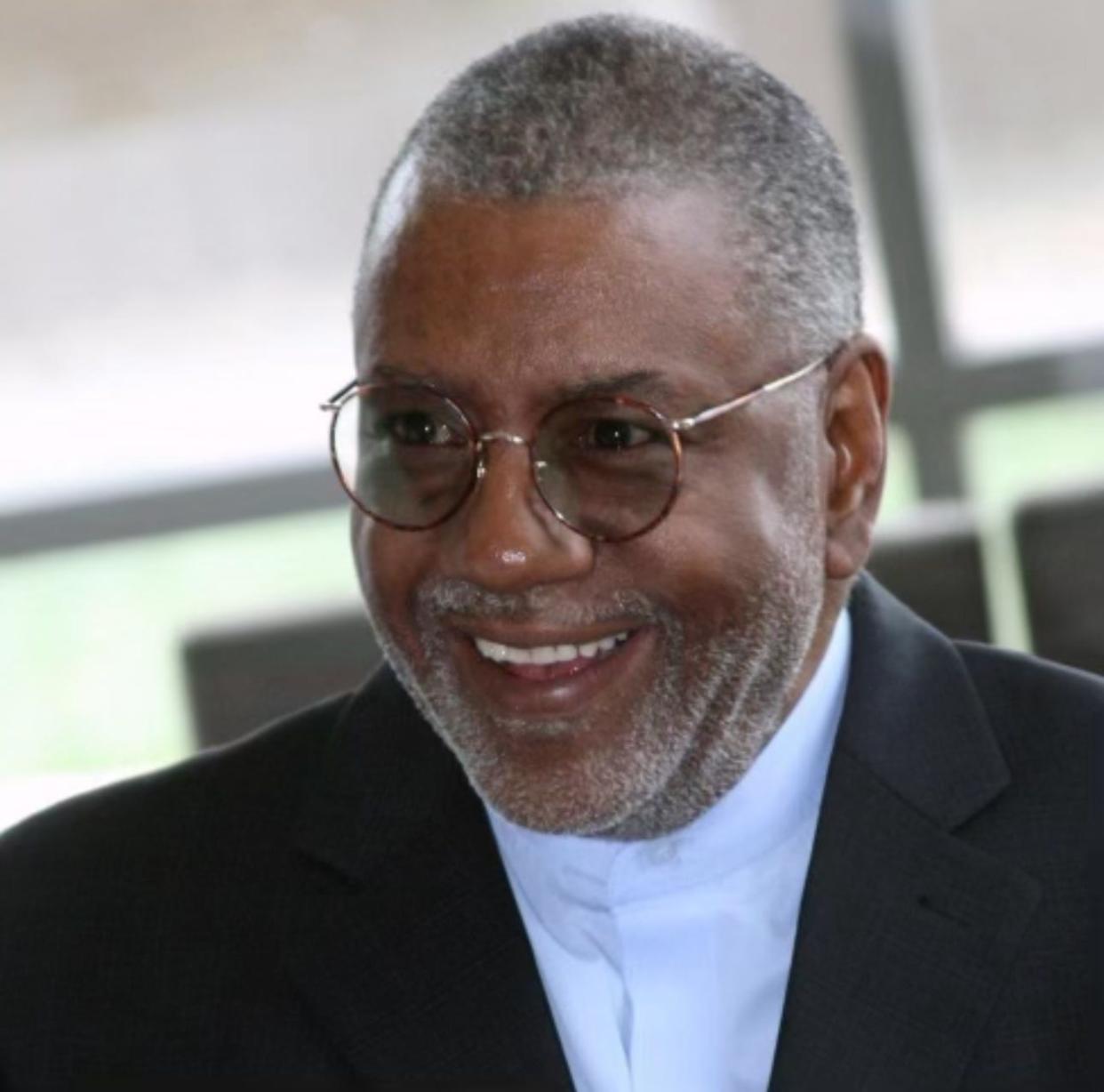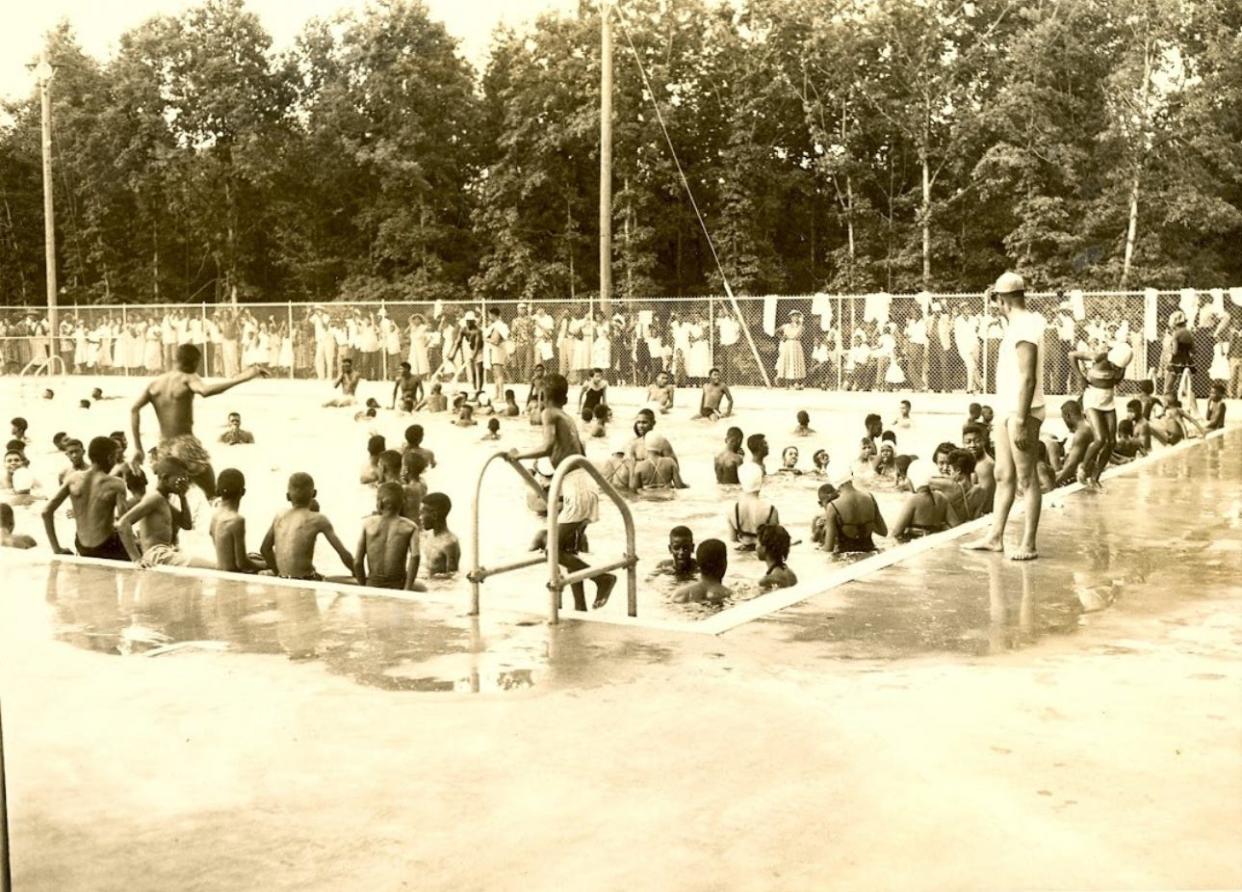Black community celebrates history of Holly Oak Park, looks ahead to the future


In the age of segregation, and then in the tumultuous years of desegregation that followed, Holly Oak Park provided a safe space for the Black community in Cleveland County.
Recently, a celebration of the park's history and heritage, called "Walking back into me, walking back into my community," was held.
"It came together rather quickly, but its something I had thought about for a couple of years," said Forrest Toms Sr., who grew up attending Holly Oak.
Toms is currently working on a book, and the program is based off his manuscript in progress.
He said he began talking with former classmates and other people in the community about Clarence Palmer, who was superintendent of the park for many years and instrumental in its success, and the Black families who worked together to create a space for the growth of generations of children.
The group decided to organize and create a program capturing its significance and also creating a vision for the future.
"The whole goal is to be able to celebrate, document and then communicate the history of Mr. Palmer and Holly Oak Park and many of those families that were life changers for an entire community of black people in the segregated south and pre-integration," Toms said. 'It really created a bridge."
He said there were multiple people involved in the project, including Valarie Cumberlander and Sherwood Hawk, and together they did research, collected photos and documents and talked to others about their memories.
"The goal was to set in place a foundation and inaugural piece that could set the tone for some community education going forward," Toms said. "We hope the model going forward is we can get people together with different skills in the same will to collectively begin to bring Holly Oak Park back to its historical significance but in a way that we are able to innovate for tomorrow."
He said they hope to have a continued program and connect with other organizations to collectively work together on issues. Toms said they are planning a follow-up meeting and hope to be featured on DJ Dr. Jim's podcast - We Promote Community Success - and use social media platforms to build an audience.
"There is no growth in change without new knowledge," he said.
During the program held last Thursday, Toms spoke to the crowd gathered in the activity center and quoted W.E.B. Dubois and said at the time, Black people were "under the veil of segregation."
He said Holly Oak Park was at the center of Black athletics and Black life in Cleveland County and even drew in people from surrounding cities including Charlotte.
Valarie Cumberlander gave the history of the creation of Holly Oak Park. She said it all started in 1947 when bonds were issued with $50,000 earmarked for recreational facilities for the Black community and a couple of years later, 50 acres of farmland was purchased for the creation of the park.
Facilities were constructed and eventually a pool, bathhouse and concession stand were added.
In the 1950s, Clarence Palmer came to Shelby, highly recommended, and assumed duties as superintendent.
Roz Sinkler shared her memories of going to Holly Oak Park beginning at the age of 5.
"From that point, Holly Oak Park was like a second home to me. In the summer time we'd come out as soon as it opened and stay there until 6 until Mr. Palmer kicked us out," she said. "At 13 that was my first job at Holly Oak Park. I worked there every summer from 1969 to 1974, my freshman year of college. It gave me integrity, reliance. Mr. Palmer instilled that. You had to be reliable you had to be on time. When he told you to do something you had to get it done. Everybody that worked for Mr. Palmer, we wanted to make him proud of us. We did well in school, we did well in everything we tried… because that's what he taught us. He taught us how to negotiate with one another, how to mediate when there was an argument, he taught us to be managers."
Sinkler said she worked in what was called the "basket room."
People would pay a quarter to get a basket where they would put their clothes into after changing into their swimsuits, and the person working in the basket room would keep the clothes for the swimmer.
Black and white photos were shown of the packed swimming pool on a hot summer day.
Buses would bring people in from surrounding communities to swim, including Asheville, Greeneville and Charlotte.
"We learned so much from Mr. Palmer, and even today I still think about everything he went through," Sinkler said.
Sinkler recalled pool cleaning days when the employees would get in the drained swimming pool, scrubbing it with brushes and bleach as if it were a bathtub until it was sparkling clean.
"We would complain. But it helped us to realize if you got a job it has to be done, and you do it well. Do whatever you do with excellence, and I think that stuck with me. Because whatever I do now, I do it to the best of my ability. I thank God for Mr. Palmer for teaching us, instilling that in us. He said you have to do everything well because of who you are."
People remembered the synchronized swimming and diving competitions, the concession stand that sold hotdogs with Nehi peach soda and peanuts.
"Holly Oak Park was our second home for most of us. I think without Holly Oak, we would have been lost. That was our village. They all kept us in line," Sinkler said.
Shelby City Councilman Andrew Hopper shared his memories of growing up in Shelby.
"Going back and listening to everybody speak, I was imagining visually and going back remembering what this all looked like," Hopper said.
He said he remembered seeing Palmer walking around with a cigar in his mouth and his dog, Toto, by his side.
"Mr. Palmer was very creative," Hopper said. "We wound up being almost the mecca of parks and recreation for Black people. Buses would be lined up going down that hill going up that hill."
He said the park brought people together.
Toms said it was a source of family, connection and culture. He called it a "psychological safety net."
"Where is the psychological safety net now?" Toms said. "That's what we have to get back to and that's what were starting to do tonight."
Reporter Rebecca Sitzes can be reached at rsitzes@gannett.com.
This article originally appeared on The Shelby Star: Black community reflects on impact of Holly Oak Park
